Mitten Vinyl Australia Is An Official Stockist Of Stramit’s SharpLine® Architectural Cladding
Features and Benefits
- A special member of Stramit’s premier Architectural Range
- A visually striking profile with tall, sharp ribs and flat pans
- Choose from 8 different profiles, featuring 25mm or 38mm rib heights
- Use either clip fix or direct fix fastening methods
Colour Options and Finishes
Base Material Thickness (mm): 0.55
Finish: COLORBOND®, ZINCALUME®, UniCote® Lux
Standard Steel
Ultra Steel
Matt Steel
UniCote® LUX
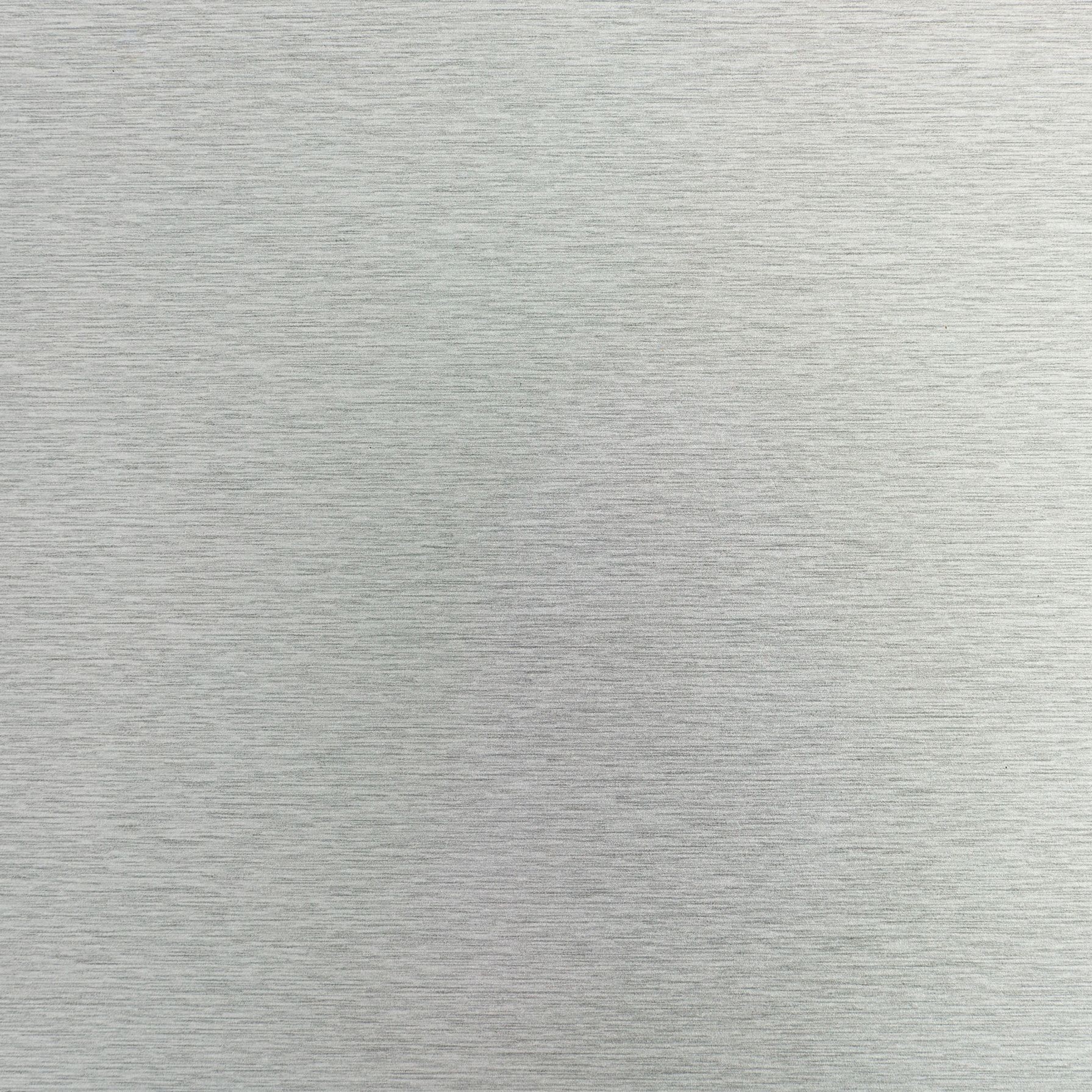

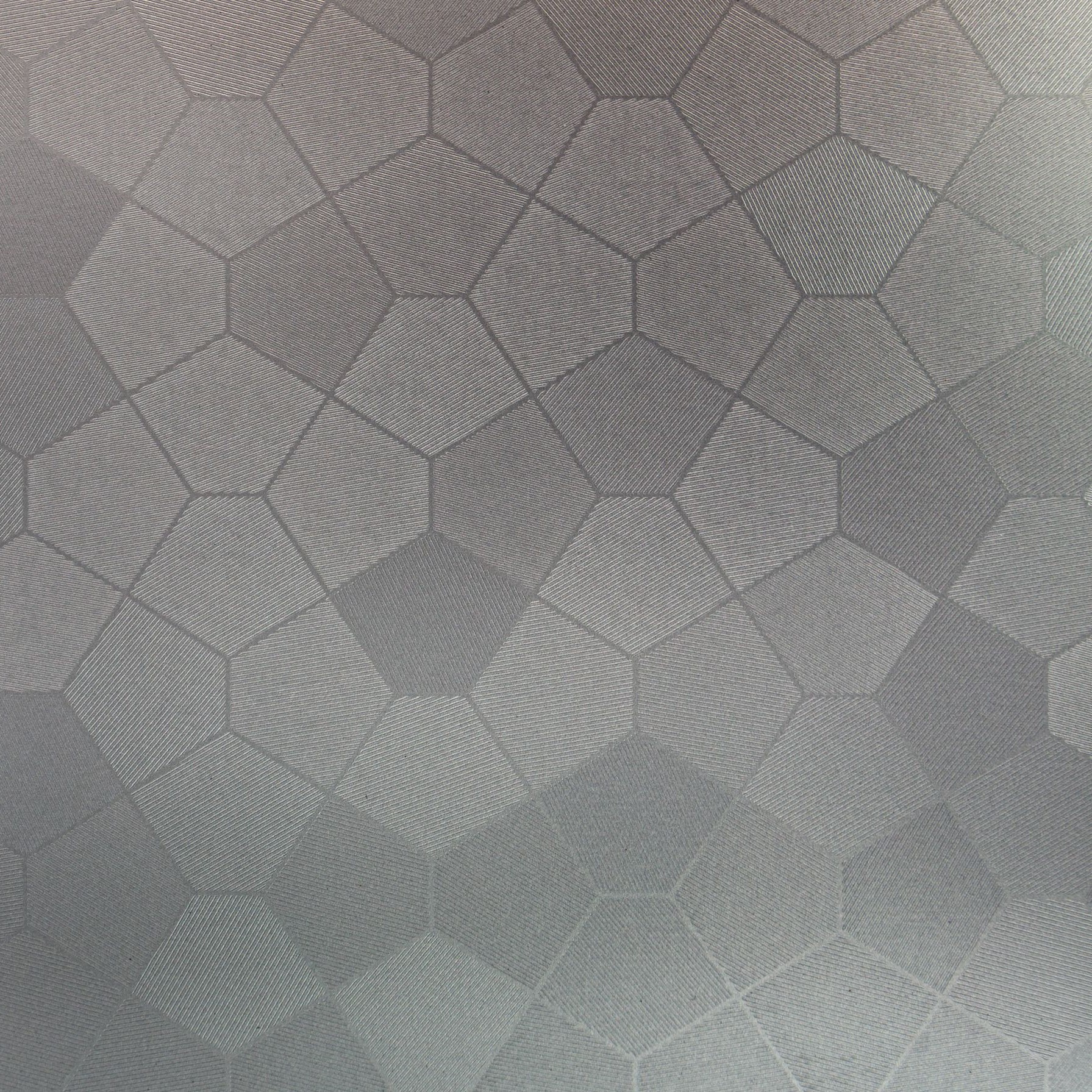
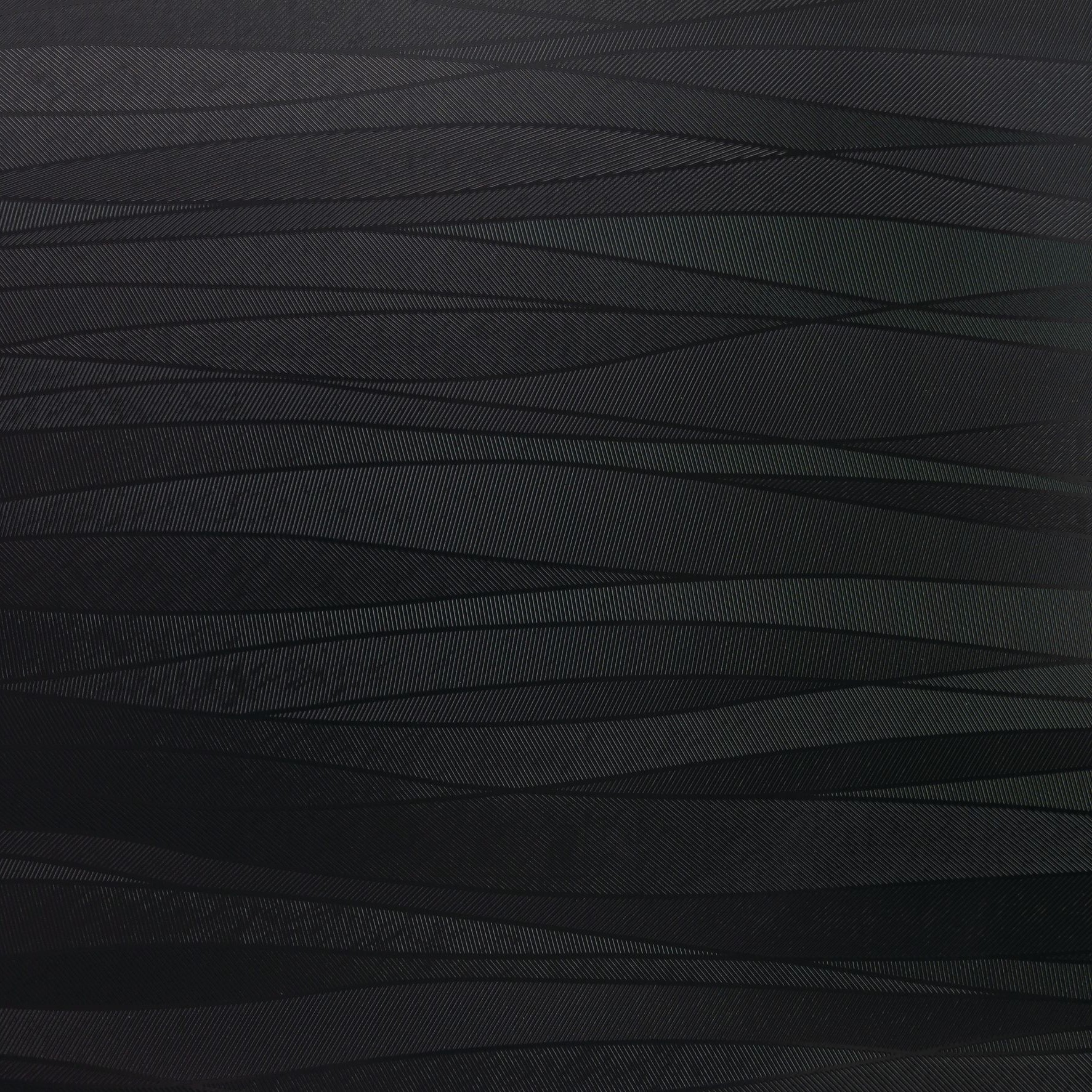
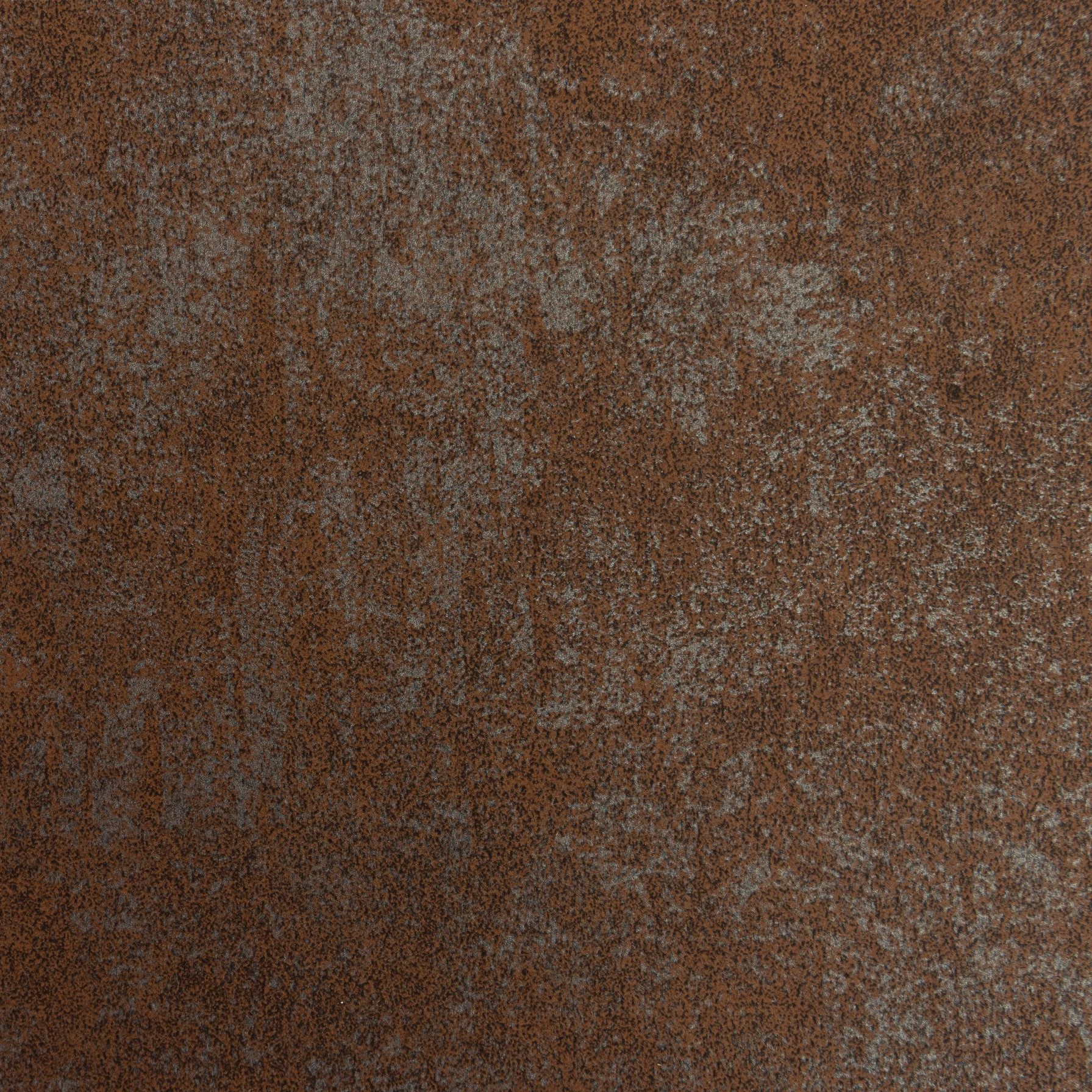
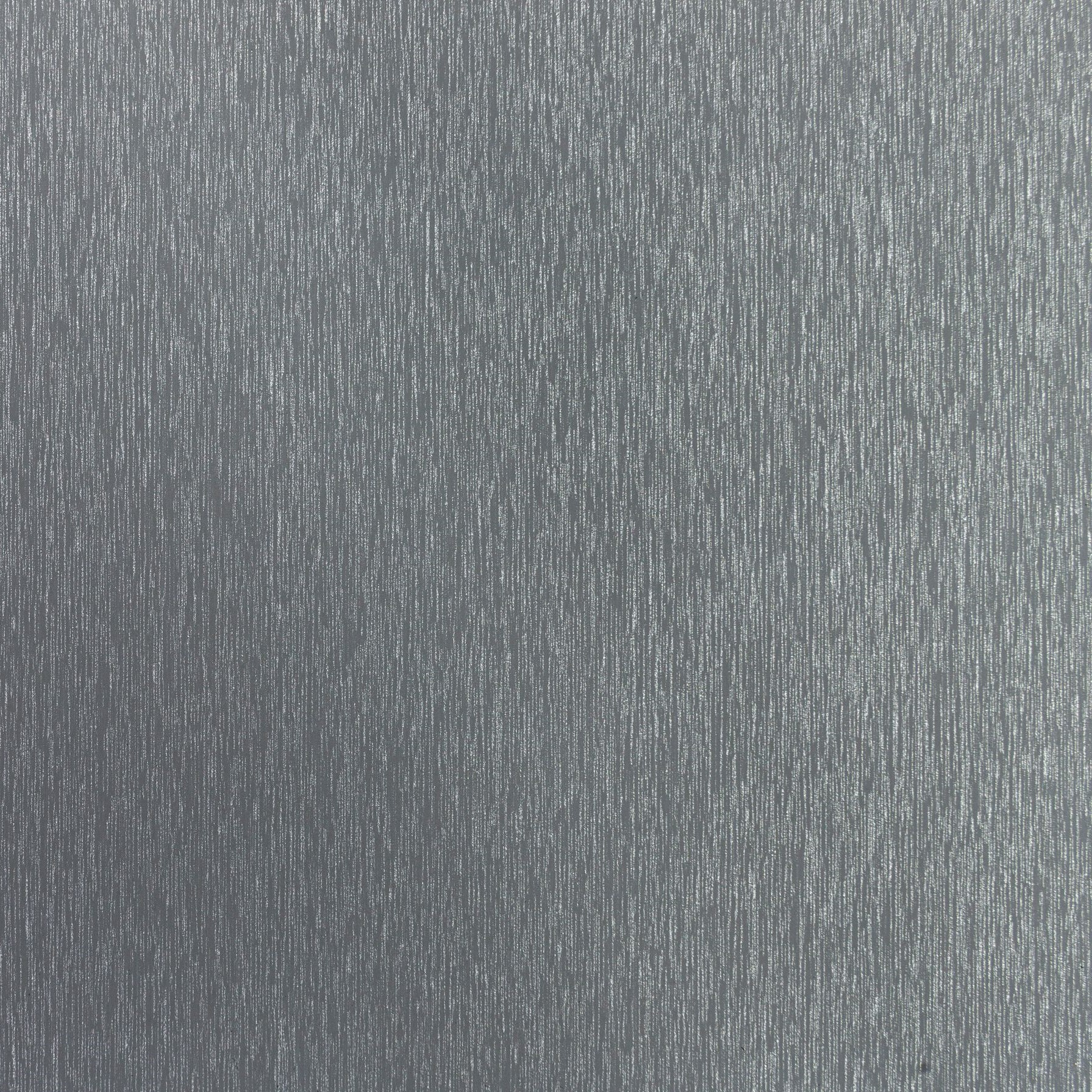
Certain colour options and finishes may be subject to availability and lead times may vary from site to site. Other colours may be available, subject to minimum order quantities and additional lead times. Please contact your local Stramit office to confirm.
Buy At Mitten Vinyl Australia
Get the SharpLine® Architectural Cladding at Mitten Vinyl Australia, we are Stramit's official stockists. Simply fill in your requirements in the below form and we will be in touch with you.
Availability
This product is produced in NSW, VIC and QLD. Availability and lead times may vary depending on your location.
General Information
SharpLine® roof and wall cladding will give excellent durability in almost all locations. It is however important to choose the correct coating for each application environment as shown in the table below. Durability recommendations do vary based on the application of the product, in roofing or walling installations. Please read the tables below carefully.
Suitability of coating type | Roof sheeting – site exposure condition | Wall cladding-distance from marine environment | ||
|---|---|---|---|---|
mild/moderate | severe marine | very severe marine | ||
| COLORBOND® | ✔ | ✘ | ✘ | >1km |
| COLORBOND® ULTRA | N/A | ✔ | ✘ | >500m |
| MagnaFlow® | N/A | ✔ | ✘ | >500m |
The approximate site exposure conditions in the table above are defined below.
Site exposure condition | Roof sheeting – distance of site from | |
|---|---|---|
breaking surf / exposed marine | calm marine | |
| mild / moderate | >200m | >100m |
| severe marine | >100m | >0m |
| very severe marine | >0m | >0m |
The suitability and exposure tables above are current at the time of publication and are guidelines only; conditions will vary from site to site. Please check the Bluescope Technical Bulletins at www.bluescopesteel. com.au for the latest information and guidance on selection, maintenance and durability. If uncertain about the appropriate coating for a particular application, or if the product is to be used in environments affected by industrial emissions, fossil fuel combustion, animal farming, or has unwashed areas, please contact your nearest Stramit office for advice.
All building products need to be checked for compatibility with adjacent materials. These checks need to be for both direct contact between materials, and where water runs from one material to another.
The following guidelines generally avoid material incompatibility:
- For zinc-aluminium alloy coated steel, colour coated steel and galvanised steel cladding avoid copper, lead, green or treated timber, stainless steel and mortar or concrete.
- Galvanised steel sheets should not receive drainage from aluminium or any inert materials, such as plastics, glass, glazed tiles, colour coated and zinc-aluminium alloy.
SharpLine® cladding requires additional care when transporting and unloading.
Pack mass may be up to one tonne. When lifting SharpLine® cladding, care should be taken to ensure that the load is spread to prevent damage.
Delivery can normally be made within 72 hours, subject to the delivery location, quantity and material availability, or can be at a pre-arranged date and time.
Please ensure that suitable arrangements have been made for truck unloading, as this is the responsibility of the receiver.
Stramit’s roofing and walling products should be handled with care at all times to preserve the product capabilities and quality of the finish.
Packs should always be kept dry and stored above ground level while on site. If the products become wet, they should be separated, wiped and placed in the open to promote drying.
Stramit’s cladding is suitable for use with insulating blanket. Glasswool blanket up to 50mm thick can be readily used. Increased thicknesses require longer fasteners and greater care in installation. Ensure the length of the screw is sufficient to have a minimum of 3 threads protruding below the support. For domestic applications Stramit recommends that insulation is always used. Contact us for further information.
SharpLine® cladding is supplied cut to length. When designing or transporting long products ensure that the length is within the limit of the local Transport Authority regulations.
The manufacturing tolerance on the length of product supplied is +0, -15mm
Stramit products conform to the following Australian standards that are called up in the NCC.
Steel material
- All metallic coated steel complies with AS 1397
- Painted steel product conforms with AS 2728
Roofing / Walling products
- Roofing/walling profiles conform with AS 1562.1, and AS 4040 parts 0, 1, 2 and 3.
- Corrugated roofing conforms with AS 1445
- Wind Load data conforms to AS 1170 part 2, and/or AS 4055
- Fasteners conform with AS 3566
- Installation details are in accordance with the Standards Australia Handbook HB39
Stramit’s roofing and walling products are protected in Australia by registered designs.
All Stramit roofing and wall cladding products conform with, or are equivalent to, AS1562.1.
Stramit has in-house, purpose built testing equipment used to design, develop and improve products for the Australian market. Many of our products are tested or witnessed by independent organisations. These include:
- University of Technology, Sydney
- Cyclone Testing Station (James Cook University)
- The University of Sydney, and
- CSIRO.
The ongoing research and development activity ensure we remain at the forefront of innovation, design and consumer information.
Technical Information
Part of Stramit’s premier Architectural Range, SharpLine® cladding can be installed horizontally, vertically or diagonally to suit the architectural requirements of the project.
Two fixing systems to enhance buildability, and a variety of finishes make SharpLine® cladding an easy choice for architectural cladding.
The roofing/walling shall be 0.55 mm BMT Stramit SharpLine® cladding in continuous lengths with 25 or 38mm high ribs and flat trays spaced at specified centres to suit clip or direct fixing methods.
Sheeting material shall be protected steel sheet to Australian Standard AS1397, with a minimum yield stress of 300MPa (Grade G300) and an AM100/AZ150 coating with an oven-baked paint film of selected colour, or a plain AM125/AZ150 coating.
The sheeting shall be fixed to the purlins/girts in accordance with the manufacturer’s recommendations. Suitable fixing screws in accordance with Australian Standard AS3566, Class 3, shall be used at every support.
Sheets shall be laid in such a manner that the approved side lap faces away from the prevailing weather.
A minimum of 50mm shall be provided for projection into gutters. Flashings shall be supplied in compatible materials as specified; minimum cover of flashing shall be 150mm.
All sheeting shall be fixed in a workman-like manner, leaving the job clean and weathertight. All debris (nuts, screws, cuttings, filings etc.) shall be cleaned off daily.
SharpLine® profiles use the fasteners below.
All fasteners with Phillips head.
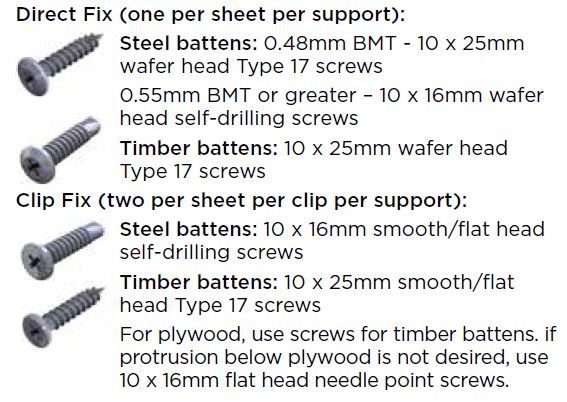
Stramit’s cladding is suitable for use with insulating blanket. Glasswool blanket up to 50mm thick can be readily used. Increased thicknesses require longer fasteners and greater care in installation. Ensure the length of the screw is sufficient to have a minimum of 3 threads protruding below the support. For domestic applications Stramit recommends that insulation is always used. Contact us for further information.
Stramit roofing, cladding, rainwater and structural building products are manufactured from steel produced by BlueScope® Steel or Pacific Coil Coaters (through Selection Steel). For more information refer to the Stramit Flammability Guide.
SharpLine® cladding roofs may be subjected to foot traffic and the spans below conform to AS1562.1 with 1.1kN load as specified in AS/NZS1170.1 for R2 – Other Roofs.
Controlled – spans that conform to AS1562.1 but require minimal careful foot traffic only on the designated foot path. Suggested for use only where occasional aesthetic imperfections from foot traffic are acceptable.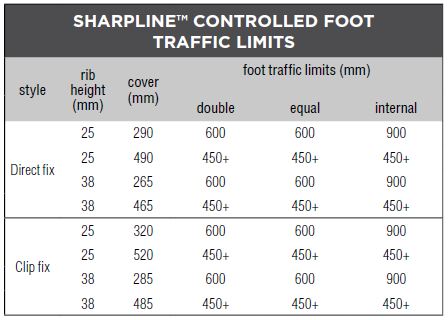
+ on plywood base. See note under wind pressure tables for details. Tables are based on tests to AS1562.1 and AS4040 parts 0 and 1.
Stramit’s SharpLine® cladding is manufactured from G300 colour coated steel or zinc-aluminium alloy coated steel. In some locations galvanised and severe environments colour coated steel may be available by arrangement.
Colour coated steels are in accordance with AS2728 – Category 3 and, for the substrate, with AS1397. Zinc-aluminium alloy coated AZ150 and aluminium-zinc-magnesium alloy coated AM100/AM125.
Stramit has a comprehensive range of colours as standard. Ask your nearest Stramit location for colour availability.

The minimum roof slope for Sharpline® cladding is 3 degrees (1 in 20). Please note: Roof pitches below 7.5° for SharpLine® direct fix cladding, and 5.0° for SharpLine® clip fix profiles require sealed side laps. All roof lengths above 5.0m also require sealed side laps.
Wide, flat profiles may be subject to “oil canning”, a perceived waviness in the material. This may happen in any wide, flat profiles and is usually an aesthetic issue only and the structural performance is not affected.
Since many uncontrollable factors are involved, no manufacturer can realistically assure the total elimination of oil canning.
With careful attention to the production and selection of material, to the panel design and to installation practice, oil canning can be effectively minimised.
To minimise the appearance of oil canning, use narrower profiles and lighter colours in matt finishes, and ensure the sub structure is in a flat pane and fasteners are installed correctly.
Stramit tests to Australian Standard AS1562.1 called up in the National Construction Code (2019) to provide span load tables.
The spans shown below are based on the direct pressure testing method descibed in the current version of As1562.1 and take account of foot traffic and wind resistance including local pressure zone effects.
Pressures are based on AS4055 or AS1170.2. Where the two standards differ, the worst case has been taken for each classification.
Data should only be used for buildings 7m or less in height, 1000m2 or less in area, where both length and width exceed the building height and site is unaffected by land topography.
Data for the most popular profiles are shown below.
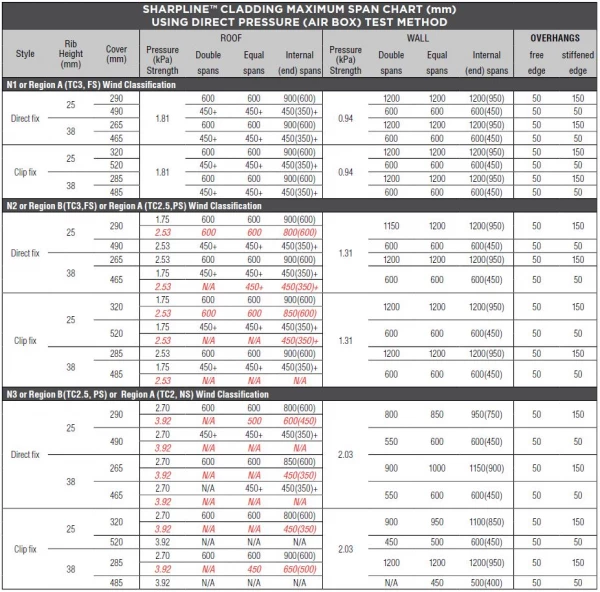
* Where roof pitch is less than 10 degrees, use spans given in red italics for roof corners. Internal spans must have both end spans 20% shorter.
+ SharpLine® cladding to be fixed to minimum 15mm thick CD Grade plywood base at spans given in the table above. Maximum span of plywood 600mm
Deflection under wind uplift not accounted for. If checking for this limit, please refer to serviceability pressures given in the wind pressure tables.
Values are only valid for use on steel supports 0.55mm G550 or thicker. Where thinner supports are used, fastener capacity must be checked. For 0.48mm thick battens, use #10×25 wafer head Type 17 screws for fixing and reduce strength capacity above by 15%.
All spans and pressures based on edge and corner areas of roof, and edge area of wall. In some instances, better spans may be possible away from edges in roof.
TC: Terrain category. FS, PS, NS: Full, partial and no shielding. Internal pressure coefficient +0.2/-0.3.
For more specific applications, SharpLine® cladding must be designed to the pressure and foot traffic limitations.
SharpLine® cladding is not suitable for spring curving applications. It is most important that the structure behind the SharpLine® cladding is the one flat pane, so any installation distortions are reduced.
All metal roof sheeting is subject to thermal expansion and, where there is a temperature difference between the sheeting and the structure, this needs to be accommodated.
The colour of the sheeting will affect the amount of thermal expansion, and whether the sheet is flat or cured will affect its ability to resist without problems.
If longer lengths are required, sheet lengths should be limited to those shown below.

Stramit’s SharpLine® cladding has excellent water-carrying capacity. Roof slopes can be as low as 3.0° for many applications.
Roof run lengths are the combined lengths of all roof elements contributing to a single pan drainage path. This can include the roof length upstream of a roof penetration that concentrates flow into other pans.
All SharpLine® cladding profiles can be used at 30 slope for up to 30 metres run length and rainfall intensities up to 400mm/hr.
The table below gives slopes for 100-year return period rainfall intensity.
For more information on water-carrying performance, refer to Stramit’s Roof Slope Design Guide.
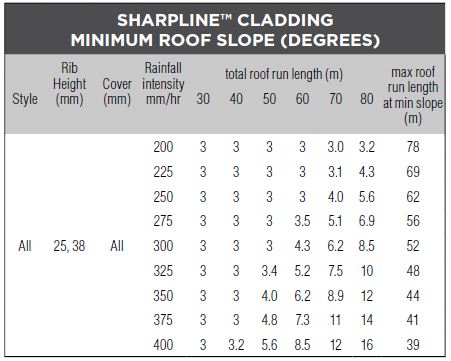
Note: Computations based on AS1562.1
Stramit tests to Australian Standard AS1562.1 called up in the National Construction Code (2019) to provide wind pressure tables.
The table below shows wind pressure capacity based on the direct pressure (airbox) test method.
Tables are based on testing to AS1562.1 and AS4040 parts 0 and 2. Internal spans must have both end spans 20% shorter.
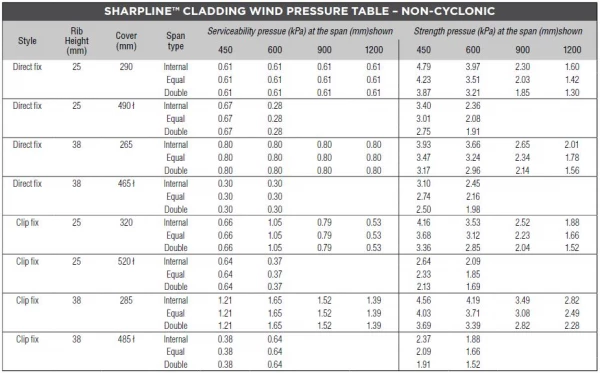
Note: Values are only valid for use on steel supports 0.55mm G550 or thicker. Where thinner supports are used, fastener capacity must be checked. For 0.48mm thick battens, use #10×25 wafer head Type 17 screws for fixing and reduce strength capacity above by 15%. Internal spans must have both end spans 20% shorter.
ł Where used on roofs, SharpLine™ cladding direct fix 490, 465 and clip fixed 520, 485 to be fixed to minimum 15mm thick CD Grade plywood base at maximum 450mm spans.
Design Information
Sheet length for design purposes
SharpLine® cladding standard protection maximum length is 9 metres. Longer lengths may be available however are not standard and should be discussed with Stramit before designing. Due to the nature of standing seam profiles, additional care must be taken when manufacturing, handling and transporting long lengths. It’s recommended that designs are made within the current standard lengths.
Installation Information
Stramit’s cladding can be easily cut, where required, using a power saw with a cold cut saw blade or a power nibbler and, for localised cutting, tin snips. Avoid the use of abrasive discs as these can cause burred edges and coating damage. Please dispose of any off-cuts carefully and thoughtfully.
SharpLine® cladding is readily installed with or without fiberglass insulation blanket.
The use of heavy-duty sarking is recommended to ensure weather tightness. If practical lay sheets in the opposite direction to prevailing weather.
Installation of SharpLine® cladding is a straight-forward procedure using the following fixing sequence for either SharpLine® Clip or SharpLine® Direct fix.
SharpLine® Clip Fix Cladding:

1. Ensure all purlins/battens are in line and correctly installed and that plywood substrate, mesh, and blanket (if specified) are in place.
2. Use a string line, or the edge of the first sheet to align the first row of fixing clips. Attach the fixing clips to the structure using the correct fasteners.
3. Position the first sheet over the clips ensuring the correct sheet overhangs (minimum 50mm).
4. Fasten through the vertical upstand to attach the sheet to the clip.
5. Install fixing clips to each batten using two fasteners, placing the clip over the trailing edge of the cladding sheet.
6. Carefully lay the following sheet in place and press the interlock together along the sheet, ensuring the interlock is fully engaged. If needed, use a rubber mallet for assistance, taking care not to damage the rib. Note: If the roof pitch is less than 7.5 degrees, or the roof run length exceeds 5 meters, apply silicone sealer below the underlap rib, prior to laying the following sheet.
7. Continue to install fixing clips and subsequent sheets, checking that sheet ends at the lower edge are exactly aligned.
8. Measure the overall cover width at the top and bottom of the sheets from time to time to avoid “fanning”.
9. For roofs, turn up the pans at the upper roof edge and install flashings. Turn down the bottom end of the sheet to facilitate drainage into gutters.
10. Clean up the roof after each day’s work, removing all screws, cuttings, swarf etc., and leave roof clean and watertight.
SharpLine® Direct Fix Cladding:

1. Ensure all purlins/battens are in line and correctly installed and that plywood substrate, mesh and blanket (if specified) are in place.
2. Either cut a full-length sheet of SharpLine™ direct fix cladding near the trailing edge to create a starter strip or install SharpLine™ cladding fixing clips to locate the first sheet (see steps 2, 3, and 4 for SharpLine™ clip fix cladding installation).
3. Position and fix the first sheet over theclips ensuring the correct sheet overhangs (minimum 50mm). Ensure the screws are not overtightened.
4. Carefully lay the following sheet in place and press the interlock together along the sheet, ensuring the interlock is fully engaged. If needed, use a rubber mallet for assistance, taking care not to damage the rib.Note: If the roof pitch is less than 7.5 degrees, or the roof run length exceeds 5 metres, apply silicone sealer below the underlap rib, prior to laying the following sheet, then fasten down with screws.
5. Continue to install subsequent sheets, checking that sheet ends at the lower edge are exactly aligned.
6. Measure the overall cover width at the top and bottom of the sheets from time to time to avoid “fanning”.
7. For roofs, turn up the pans at the upper roof edge and install flashings. Turn down the bottom end of the sheet to facilitate drainage into gutters.
8. Clean up the roof after each day’s work, removing all screws, cuttings, swarf etc., and leave roof clean and watertight.
As with all roofing products, we recommend extra caution be taken when walking on the roof. When walking on SharpLine® roofing, always wear flat rubber soled shoes and place feet only in the trays, taking care to avoid the last tray or two near edges of the metal roof area. Walk close to supports to avoid damage.
Maintenance Information
Care & Maintenance
Below are some handy hints and tips to achieve maximum life from your COLORBOND® and ZINCALUME® finished products.
- In areas of little rainfall, products should be cleaned regularly.
- Brick cleaning acid should not come into contact with steel fascia, gutter, or roofing and walling.
- Never immerse these products in sand, soil or concrete.
- Do not use touch up spray can paint on COLORBOND® steel.
- Remove metal debris from cutting and/or drilling to avoid swarf damage.
- Prior to installation, keep bundled material dry.
- Prepainted metal roofing components should be stored in the shade as the protective plastic film will become difficult to remove if it is exposed to direct sunlight.
- Make sure materials made of different metal, such as copper and lead, do not make contact with these products, and water does not run from one to the other.
- Roofing and guttering should be free draining and free from dirt and leaves.

